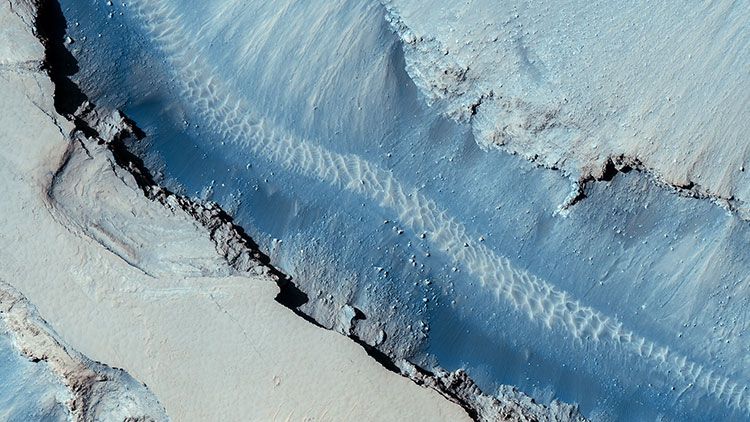#56 MARTIAN TERRAIN
Cerberus Fossae East of the Head of Athabasca Valles.

This image shows part of Cerberus Fossae, a long system of extensional (normal) faults arranged in trough-bounding (graben-bounding) pairs. Cerberus Fossae served as the source of a large volcanic eruption that draped Athabasca Valles in lava.
Large boulders that have been dislodged from the graben walls are visible on the floor of Cerberus Fossae. The image shows an example of an approximately 6 meter (20 feet) boulder that left a distinct track as it moved downhill. Although this track is quite clear, ripples inside the track are discernable, indicating that enough time has passed for wind activity to rework loose material into the form of ripples. With close examination of this observation, one can see many boulder tracks, some with ripples and some without ripples.
Written by: Anjani Polit
Large boulders that have been dislodged from the graben walls are visible on the floor of Cerberus Fossae. The image shows an example of an approximately 6 meter (20 feet) boulder that left a distinct track as it moved downhill. Although this track is quite clear, ripples inside the track are discernable, indicating that enough time has passed for wind activity to rework loose material into the form of ripples. With close examination of this observation, one can see many boulder tracks, some with ripples and some without ripples.
Written by: Anjani Polit





